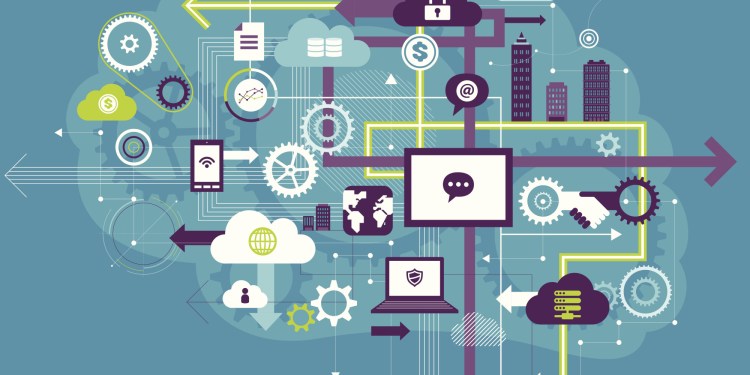This sponsored post is produced by AT&T Mobility.
The next major technological advancement poised to dramatically impact our personal and professional lives is The Internet of Things. According to author Patrick Tucker in his book The Naked Future: What Happens in a World That Anticipates Your Every Move?, we can expect to have 50 billion internet connected devices by 2020.
The ramifications for businesses, in particular, are significant and immediate. With advanced technologies — including high-speed networks, machine-to-machine (M2M) platforms, big data and analytics, mobile solutions and enhanced security – the Internet of Things is already driving greater efficiencies, opening up new revenue streams and transforming the customer experience.
Working with millions of business customers all over the world, we have identified four key considerations every business should be discussing:
1. The Internet of Things demands your participation
First, the enterprise must embrace new technologies and reconstruct internal ecosystems to remain competitive. The Internet of Things makes way for a wide range of new technology adoption to stay ahead of the curve in their respective markets. Those that don’t embrace the fast-paced Internet of Things opportunity will struggle to survive as competitors will continue to disrupt the market by tapping into the vast potential of this new paradigm.
Take, for example, the current supply chain. Historically, companies padded their inventory to account for unknown expenditures. With the use of M2M technologies, companies are now able to track inventory at every step in its supply chain.
This helps businesses significantly decrease inventory and, with real-time tracking, nearly eliminate the guesswork of demand planning. Companies applying this approach can significantly reduce the cost of inventory and reallocate working capital to critical growth initiatives. Companies that fail to make the leap to advanced technologies will simply fail to keep pace with their industry counterparts.
2. The Internet of Things is a platform for innovation
The Internet of Things is not only driving greater efficiencies to support current operating models, it is also creating new revenue streams for budding entrepreneurs and opening the door to innovations that weren’t possible a decade ago.
For example, SST is tapping into the Internet of Things with the creation of an innovative solution called ShotSpotter, which helps address neighborhood gun crime. Via an array of interconnected computer-powered acoustic devices spread across a city, ShotSpotter instantly detects and locates gunshots, and then delivers real-time data alerts to dispatch centers, patrol cars and smart phones. Instantly notifying first responders about active shooter incidents in progress, and giving them real-time situational context, enables them to act more quickly, safely and effectively.
3. The Internet of Things enables a much-improved customer experience
Companies are now able to deliver more personalized applications to enhance the customer experience, thanks to the advanced capabilities of the Internet of Things. More and more, digital business is extending to the edge of the company not just in its marketing efforts, but across every aspect of the customer lifecycle — from identification, to acquisition, service, and support. And, advanced technologies are enabling the enterprise to do this in a way that connects far beyond a simple sales transaction.
One way AT&T is supporting business is with our enterprise-focused application program interface (API) business. We work with companies to understand their real-time challenges and how we can help address specific obstacles by opening up access to a range of services and capabilities on our network. For example, our Location Information Services portfolio allows companies to access AT&T’s network data to authenticate the location of a customer. With this enhancement, we’re helping companies provide consumers who opt-in for the service with advanced protection against fraud when they travel internationally — enabling them to shop with their credit cards more confidently without compromising security.
4. Customers will need help using The Internet of Things
Finally, while the Internet of Things offers significant potential for businesses, it could have a negative impact if not managed appropriately.
Think about it. Fifteen years ago, the typical American home most likely had only a TV and a VCR to connect and interconnect with one another. However, as the Internet of Things explodes, so too will the number of daily interactions pairing consumers with internet connected devices and touch points. While innovative and intuitive user-interface designs and technologies are likely to emerge, the potential for customer support issues grows exponentially in a massively connected world.
The Internet of Things is here, today, and the opportunities are limited only by our imagination and the will to act.
Carpe Diem!
Mike Troiano is Vice President, Industrial Internet of Things, at AT&T Mobility.
References: 1 Pew Research Center, May 2014, “The Internet of Things Will Thrive by 2025.” Available at: http://www.pewinternet.org/2014/05/14/internet-of-things/
Sponsored posts are content that has been produced by a company that is either paying for the post or has a business relationship with VentureBeat, and they’re always clearly marked. The content of news stories produced by our editorial team is never influenced by advertisers or sponsors in any way. For more information, contact sales@venturebeat.com.
VentureBeat's mission is to be a digital town square for technical decision-makers to gain knowledge about transformative enterprise technology and transact. Learn More

